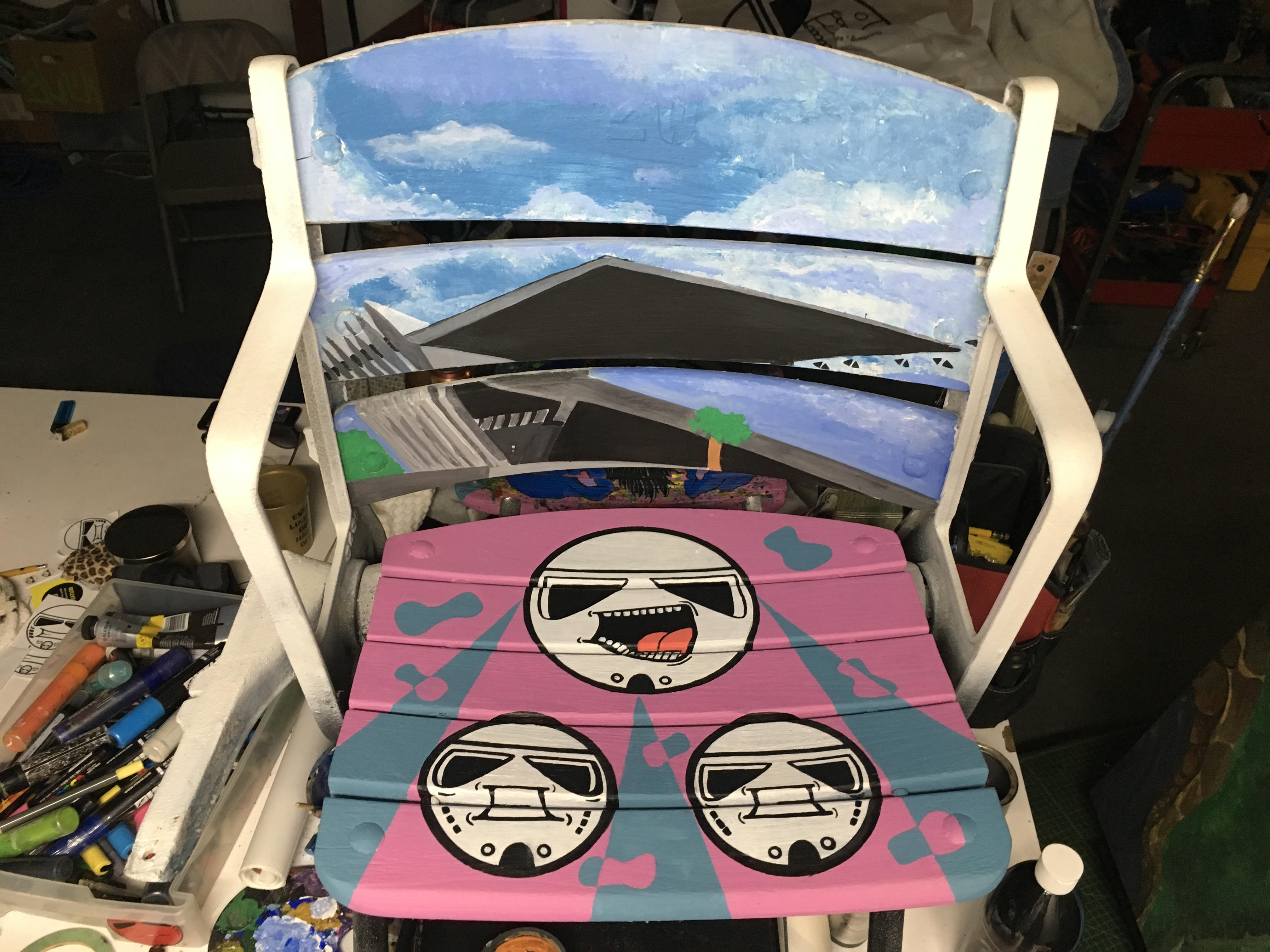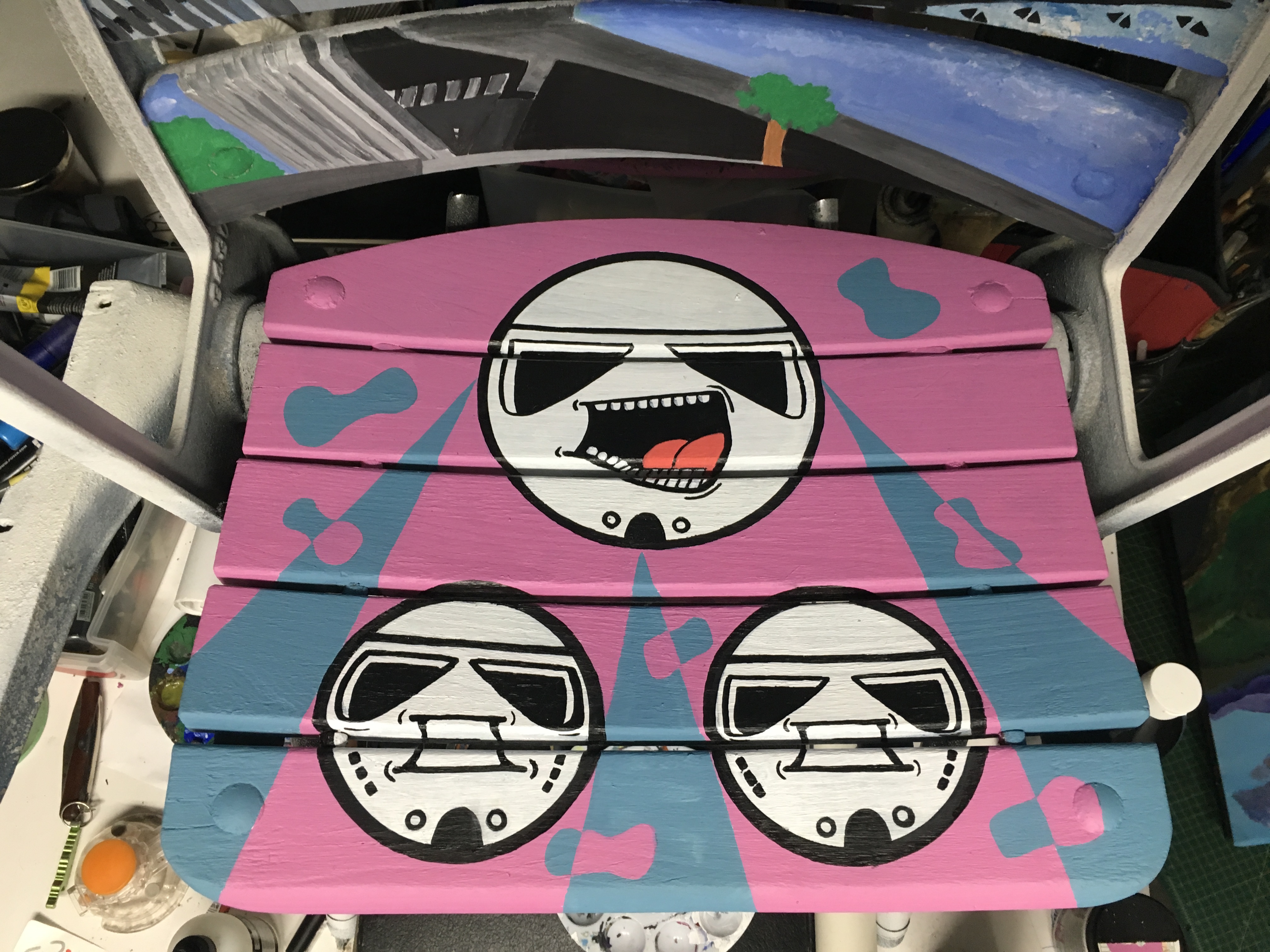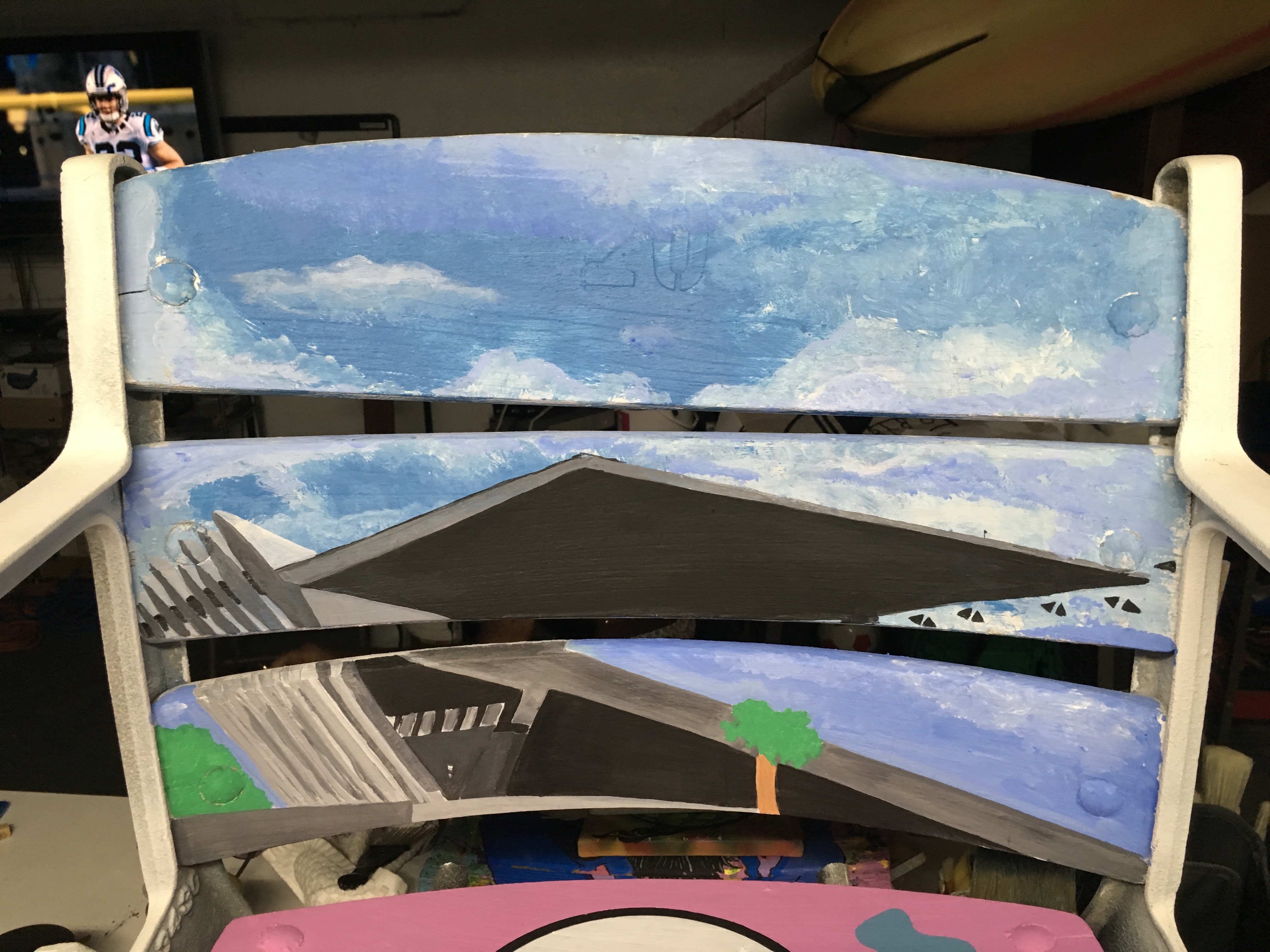
ChyTea Walton
A Biographical Statement on the Work of ChyTea
Like so many kids influenced by the hip-hop culture of the 1980s, ChyTea became fascinated with graffiti art. And what started out as a teenage past-time, one fueled by the intrinsic need to express himself in a world surrounded by violence, has now become his life’s work.
Growing up in North End, Hartford, without a father wasn’t unique. Like so many he knew, ChyTea functioned as a gypsy child, roaming from home to home and in and out of different schools. But there were brief moments of stillness, where he watched his mother, fascinated, as she worked with stained glass and tapestries. He would observe, with wide-eyed amazement, her ability to transform what ChyTea perceived as garbage into upholstery for furniture that magically became new. Like her, he is an alchemist. But his alchemy works from the inside-out.
Before we are given words, as children we only see form. Paired down shapes— triangles, squares, circles—are what we cling to in an effort to add structure to our tiny worlds that exist without linguistics. Without awareness, we revisit these structures time and time again. They bring comfort and reliability, where there otherwise is none. They parent and befriend us. They are consistently boomeranged through the geometry of the outside world. But even when we close our eyes, we catch them effortlessly. They never leave. They never abandon.
Ten years ago, ChyTea created the Mitrooper. This simple image, one based on a circle, has stuck with him and has, essentially, become his trademark. The Mitrooper is a blend of pop culture—the fictional soldier from Star Wars, a movie watched countless times by a young boy—and necessity. Through the repetitious creation of this character ChyTea is reminded of all those he has lost, but also of his children. The autobiographical symbol is a reminder that life is tough and to remain a fighter. But it is also there to say, “Smile. Happiness is here.”
So many things have been written about art. Art is fearless. Art is war. But art is also merely paint on a wall, collecting and absorbing the memories and feelings of the artist, over and over again. They are left by ChyTea to be muted and passed along as inner reflections, now owned by the surface, for others to see. Therein lies his magic. Therein lies his alchemy.
—Seanica Howe, M.A.


